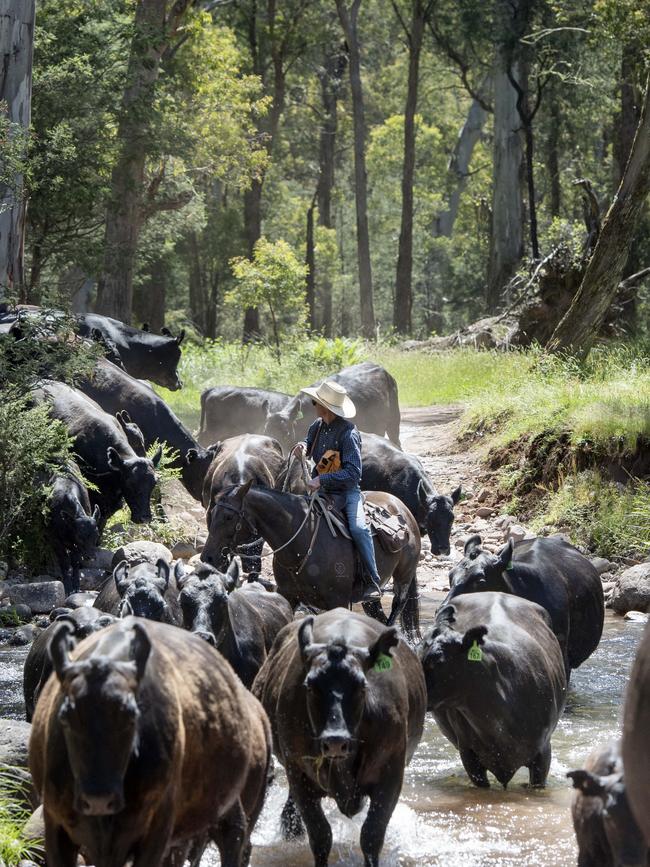Cattle returns to come under supply pressure by mid-year
Read analysis from seven cattle experts on what is in store for new year cattle numbers and prices.
Cattle prices face some headwinds as the herd rebuild generates higher slaughter-ready numbers and processors continue to be challenged by worker shortages and trade bans.
A new survey of six market analysts, conducted this month by Meat and Livestock Australia, point to an 11 per cent fall in young cattle prices by mid year.
But a seventh independent market watcher has predicted a slightly stronger result.
This week, the Eastern Young Cattle Indicator fell off a cliff — albeit it a record high cliff.
The benchmark price sat at 1112.15c/kg carcass weight on Monday — 79.3c/kg lower than a week ago. However, this remains 230c/kg higher than the same time last year.
Thomas Elder Markets analyst Matt Dalgleish said the shorter week, smaller yardings and not as much restocker activity showed what could happen with young cattle prices.
Meanwhile, major processor Teys has had its Naracoorte plant banned from exporting to China; making it the 10th ban on an Australian abattoir.
However, only 5 per cent of the 600 cattle processed daily at Naracoorte in South Australia are destined for China.
MLA market information manager Stephen Bignell said while bans disrupted trade, Australia had a diversified export market and normally sent less than 20 per cent of exports to China.
On the herd rebuild, MLA’s latest cattle industry projections. released this week, point to 1.1 million more cattle to be added to the nation’s herd this year, with better seasonal conditions also helping boost slaughter numbers 11 per cent.
According to MLA’s price survey, the EYCI could fall to 998c/kg by June 30, as demand eases and supply lifts.
But a leading analyst has queried the accuracy of the herd and price projections.
Global Agri-Trends analyst Simon Quilty said the herd could be about 2.5 million head lower than MLA estimates.
Therefore the rebuild, and numbers available for slaughter or export, would be slower and lower.
Mr Quilty estimates the national herd would reach 24.8 million this year; not 27.2 million as predicted by MLA.
“It is very difficult to make accurate comments on production, exports or slaughter if the baseline figures are rubbery,” he said.
“The baseline numbers MLA are using are best guesstimates; they are made with insufficient information.”
Mr Quilty said his reasons for expecting a smaller herd outlook were based on two seasonal impacts – the extended drought and the January 2019 floods in northern Australia.
“The drought and then those floods produced far greater losses on-farm that we ever imagined,” he said.
He also queried when MLA made their predictions and suggested they could be better aligned to ABS and Census data releases.
Given the lower supplies he predicts, Mr Quilty’s EYCI estimates during June this year range from a low of 1040c/kg to a high of 1070c/kg, averaging 1050c/kg, which is slightly higher compared with the survey results MLA collated from six other industry experts.
Mr Quilty also expects slaughter throughput to increase 6-7 per cent, not MLA’s predicted 11 per cent, because a lack of labour and global supply chain woes that would continue to constrain processors.

Mr Bignell said MLA stood by their modelling, noting commentators often predicted herd sizes above and below MLA’s predictions.
He added labour pressures had been well considered, however MLA took the view that processors ran dynamic businesses and often “found a way” to lift production, particularly if prices eased.




